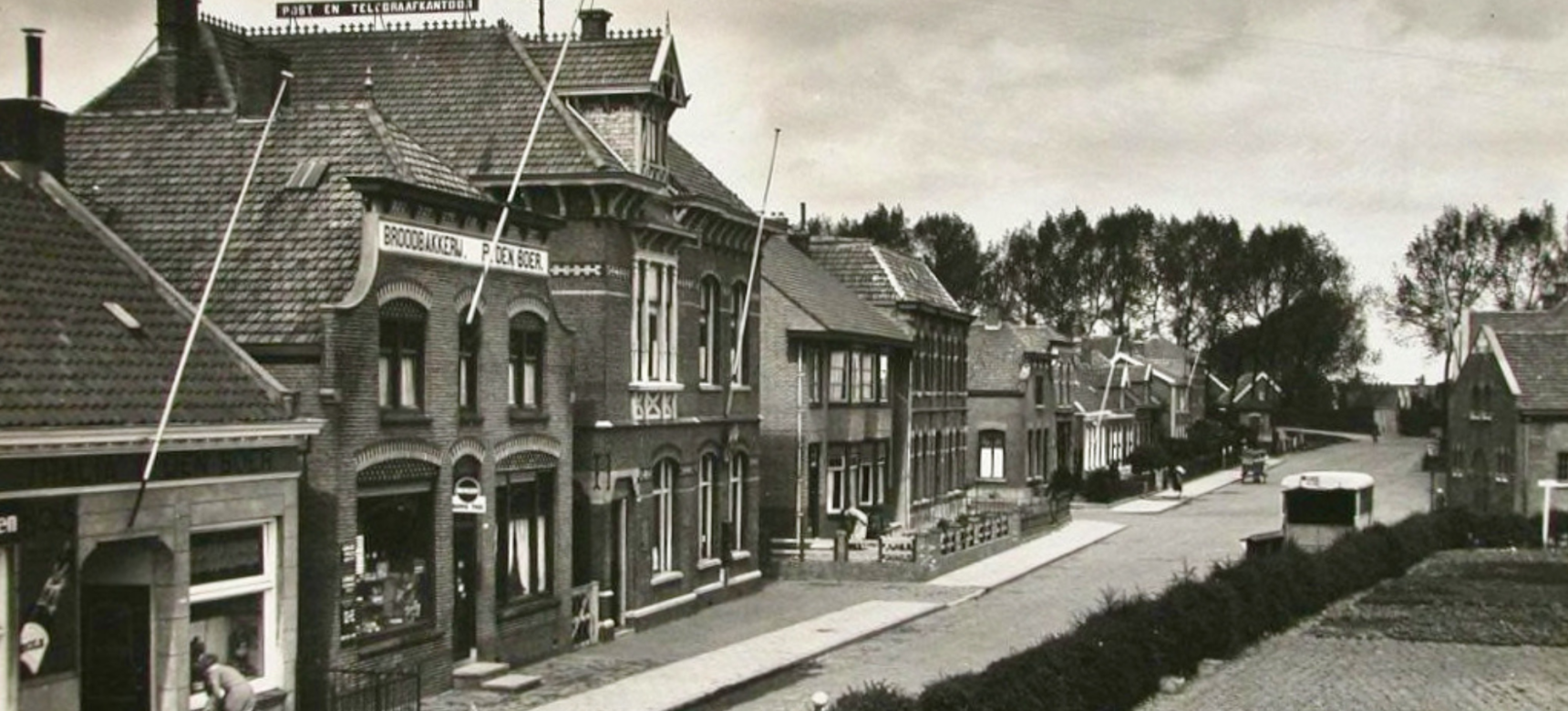This detour, a 3.7-kilometer walk along Hansweert's most notable landmarks, was put together by villagers. Along the route you will find extra information signs attached to bollards. For this detour (purple line on map), follow the red directional arrows along the way. You can also extend the route via the other (junction) numbers of the walking network.
-
Pubs, stores and services
For many years, Schoolstraat was clearly visible where Hansweert was all about. Services (in the form of an imposing post office), stores (bakery Den Boer) and pubs (café-zaal Thalia). Over the years, liquor and tap licenses were issued at more than 40 different addresses. Café-zaal Thalia (from 1892 to 1996) was only one of them. Both Thalia and the post office have since been demolished.
-
Door rocker
The Wip, a lifting device that allowed lock gates to be hoisted onto shore for maintenance in the large workshop that stood between the Kleine and Middensluis (Little and Middle Locks). The door rocker (deurenwip) now stands as industrial heritage in the landscape.
-
Great Lock (Grote Sluis)
Soon after the opening of the canal, the Middensluis (Middle Lock, 1866) and Kleine Sluis (Little Lock, 1872) proved insufficient capacity for the increasing shipping traffic. In 1916, therefore, the Grote Sluis (Great Lock, 152 meters in length) was officially commissioned by Queen Wilhelmina. Of the lock, only the now only the outer lock head remains.
-
Little Lock (Kleine Sluis)
Soon after the opening in 1866, the question arose whether it was responsible to have only one lock (the Middensluis lock) in Hansweert. Stoppages due to breakdowns or maintenance could not be afforded. In 1872, the West Lock (popularly known as the Little Lock) was opened. After its decommissioning, the lock was filled in with all elements such as doors and turning mechanisms.
-
Amos
Amos is a work of art by Pastor Omer Gielliët. It stands at the head of the former outer harbor of the canal, which was filled with harbor silt. It is a tree shape whose branches point to the polders and the sky. Originally placed in wood in 1991 but replaced in 2007 by a bronze replica by Eric Odinot. The artwork is part of a series of wooden sculptures of a protest movement against the pollution of the Scheldt.
-
Kanaalstraat
Many parlevinkers had a store and the Kanaalstraat was one of the most important shopping streets. Coming from the lock complex one found there not only bakers, butchers and greengrocers and milkmen but also hairdressers, haberdashery, clothing and shoes, smoking goods, shipping supplies and everything else needed at that time.
